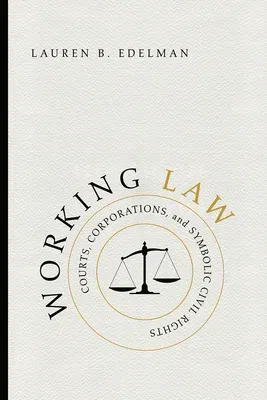Lauren B Edelman
(Author)Working Law: Courts, Corporations, and Symbolic Civil RightsPaperback, 28 November 2016

Qty
1
Turbo
Ships in 2 - 3 days
In Stock
Free Delivery
Cash on Delivery
15 Days
Free Returns
Secure Checkout

Part of Series
Chicago Law and Society
Part of Series
Chicago Series in Law and Society
Part of Series
Chicago Series in Law and Society (Paperback)
Print Length
312 pages
Language
English
Publisher
University of Chicago Press
Date Published
28 Nov 2016
ISBN-10
022640076X
ISBN-13
9780226400761
Description
Product Details
Author:
Book Format:
Paperback
Country of Origin:
US
Date Published:
28 November 2016
Dimensions:
22.61 x
15.24 x
2.03 cm
ISBN-10:
022640076X
ISBN-13:
9780226400761
Language:
English
Pages:
312
Publisher:
Series:
Weight:
453.59 gm